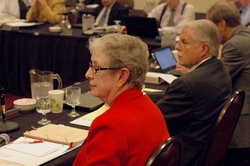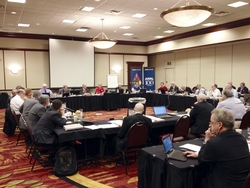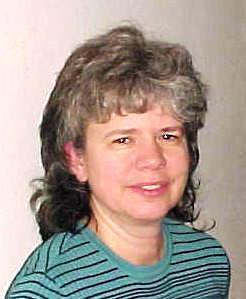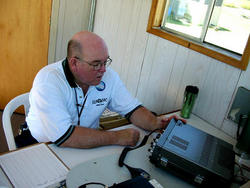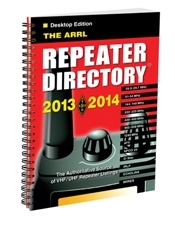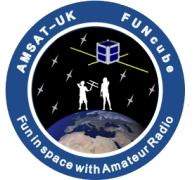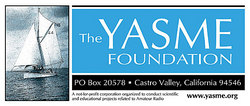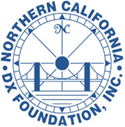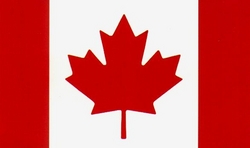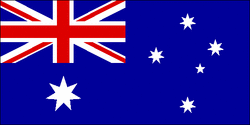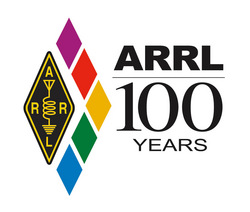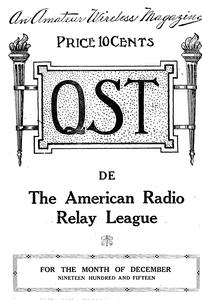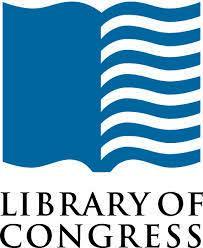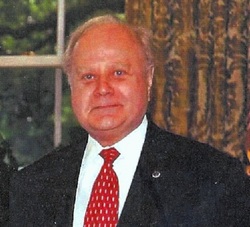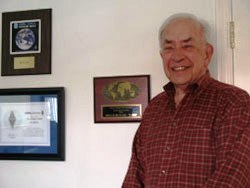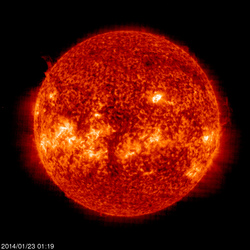 January 23, 2014 John E. Ross, KD8IDJ, Editor
| |||||||||||||||||||
Your League: Kay Craigie, N3KN, Wins Third Term as ARRL President The ARRL Board of Directors has elected League President Kay Craigie, N3KN, to a third two-year term. The Board met January 17 and 18 in the Hartford, Connecticut, area for its annual meeting, and election of officers was at the top of the business agenda. The League's 15th president, Craigie lives in Blacksburg, Virginia, and has been in office since 2010, succeeding Joel Harrison, W5ZN.
The Board also re-elected First Vice President Rick Roderick, K5UR, to a new two-year term. ARRL Northwestern Division Director Jim Fenstermaker, K9JF, was elected Second Vice President, succeeding incumbent Bruce Frahm, K0BJ. Northwestern Division Vice Director Jim Pace, K7CEX, acceded to the Director's chair. Also elected to new two-year terms were International Affairs Vice President Jay Bellows, K0QB, and Treasurer Rick Niswander, K7GM. In addition the board chose ARRL Executive Committee members and ARRL Foundation directors. Elected for one-year terms to the Executive Committee were Central Division Director George R. "Dick" Isely, W9GIG; Pacific Division Director Bob Vallio, W6RGG; Midwest Division Director Cliff Ahrens, K0CA; Hudson Division Director Mike Lisenco, N2YBB, and West Gulf Division Director Dr David Woolweaver, K5RAV. ARRL Foundation Board Director members elected for three-year terms were Ahrens, Frahm, and Fenstermaker. Gene Hastings, W1VRK, retired from the Foundation Board after many years of devoted service. As the International Amateur Radio Union (IARU) International Secretariat, the ARRL, after consultation with the IARU Administrative Council, nominates candidates for IARU President and Vice President. The Board instructed ARRL Secretary David Sumner to vote to ratify the nominations of incumbent IARU President Tim Ellam, VE6SH/G4HUA, and incumbent IARU Vice President Ole Garpestad, LA2RR, for additional five-year terms. Other Major Board Actions
President Craigie announced committee appointments for the coming year, including new chairmen of two standing committees: Dakota Division Director Greg Widin, K0GW, as chairman of the Administration & Finance Committee, and Rocky Mountain Division Director Brian Mileshosky, N5ZGT, as chairman of the Programs & Services Committee. The ARRL Board selected media professionals in Delaware and Michigan as recipients of the 2013 Bill Leonard, W2SKE, Professional Media Award.
The official minutes of the annual meeting have been posted to the ARRL website. Your League: Oregon SM Bonnie Altus, AB7ZQ, Named ARRL Northwestern Division Vice Director
ARRL President Kay Craigie, N3KN, has tapped Oregon Section Manager Bonnie Altus, AB7ZQ, of Sheridan, as the League's Northwestern Division Vice Director, succeeding Jim Pace, K7CEX. Pace took over as ARRL Northwestern Division Director after former director Jim Fenstermaker, K9JF, was elected ARRL Second Vice President at the ARRL Board of Directors annual meeting. Licensed since 1997, Altus became interested in ham radio while working in information systems and telecommunications for a hospital. She thought ham radio would be beneficial in disaster communications, and she used what she learned as a new licensee to write an emergency communications plan for the hospital. She has served as president of the McMinnville Amateur Radio Club and as an ARES assistant emergency coordinator and emergency coordinator. An Amateur Extra class licensee, she is especially interested in digital modes. Her husband Mark is AC7ZQ. Altus had served more than 7 years as Oregon Section Manager, from July 2006 until January 2014.
ARRL Membership and Volunteer Programs Department Manager Dave Patton, NN1N, announced the appointment of Everett "Ev" Curry, W6ABM, of Hillsboro, Oregon, to fill the remainder of Altus's term as Oregon Section Manager. Patton consulted with Pace in filling the SM vacancy. Curry will complete the current term, which expires on June 30, 2014. Nominations for the next term of office (starting July 1) for the Oregon SM are now being solicited. Curry has been an Assistant Section Manager in Oregon since 2007, an Official Observer since 2003, and the Official Observer Coordinator since 2008. In addition he served as Public Information Coordinator for Oregon from 2002 to 2007. An ARRL Life Member, he is editor of The Oscillator, the monthly journal of the Tualatin Valley Amateur Radio Club. Your League: Repeater Owners Now May Submit Repeater Directory Updates Directly to ARRL
Repeater owners now may submit updated information for use in the ARRL Repeater Directory, TravelPlus and other products directly to the ARRL via the League's website. Repeater owners or trustees can use the new web page to notify the ARRL of changes to existing repeaters, such as new CTCSS frequencies or call sign changes. The web page cannot be used to add new or uncoordinated repeaters, however. "This new capability is intended for repeaters that are already on the air, as a means to keep our information as accurate as possible throughout the year," said Steve Ford, WB8IMY, ARRL Publications Manager. Ford was quick to point out that sending information directly to the ARRL does not relieve repeater owners of their obligation to communicate with their coordinators. "We are simply collecting the most up-to-date information for use in books and software, and only for those instances where something has recently changed," Ford stressed. "This isn't meant to be a substitute for notifying your coordinator. It also isn't a substitute for formal coordination of a new repeater. Only repeater coordinators can do that." Your League: New Guide Promotes FUNcube-1's Educational Value A new FUNcube guide developed by ARRL Education & Technology Program (ETP) Director Mark Spencer, WA8SME, aims to maximize the educational focus of the tiny AO-73 satellite. Spencer's Pragmatic Guide for Using the FUNcube (AO-73) Materials Science Experiment in the Classroom prompts readers to dig beyond AO-73's Amateur Radio transponder and telemetry uploads and downloads and "take a closer look at what is really going on" as the satellite orbits Earth. The diminutive spacecraft includes an AMSAT-UK-developed materials science experiment (MSE). Spencer's guide helps teachers and students to analyze telemetry and apply the laws of thermodynamics to examine how heat is radiated into space from materials having different surface finishes.
"The primary mission of the FUNcube is education, and the MSE is the focus of that mission," Spencer said. When it's not in educational mode the spacecraft switches on an Amateur Radio SSB/CW inverting transponder (435.150-435.130 MHz LSB up / 145.950-145.970 MHz USB down). "I know there is an ongoing discussion of the value of cubesat telemetry when compared to transponder operations," he said. "[Y]ou just might find that an occasional look at the telemetry will help you better understand satellites and make you a better satellite operator." As Spencer explained, the FUNcube-1 MSE includes two separate experiments -- one using the thermally isolated aluminum bars mounted on one face of the satellite, and the second using four aluminum bars that form part of the satellite's body in the corners of the cube. MSE data are transmitted via a 2 meter downlink (145.935 MHz BPSK) and decoded and displayed by the AMSAT-UK Dashboard software. "Collecting the data is only part of the education mission," Spencer said. "The other -- and more meaningful part -- is interpreting the data." That, he explained, starts with a thermodynamics refresher. "In the broadest terms, thermodynamics is the study of how heat moves from one place to another," he continued. "The purpose of the FUNcube MSE is to allow students to witness heat transfer by radiation firsthand in an environment -- space -- where convection and conduction are not present." Spencer called the FUNcube MSE "an exceptional educational resource," and he praised AMSAT-UK's efforts. "It's now our turn to gain as much as we can from their efforts, and I hope the Guide will help you get started." The ARRL's Classroom Library: Satellite Communications page includes a link to the new guide and has more information on bringing space into the classroom. Read more. Your League: February QST Delivery Delayed to Some Destinations Mail delivery of February QST may be delayed to some members.
Our printer has reported that all copies now are in transit, but there was a delay of a few days with the February issue, as several of the printer's Midwest divisions were shut down due to inclement weather. Members who haven't yet received the February issue should get their copies shortly. The digital version of the February issue is now available to ARRL members. Awards: Yasme Foundation Announces Excellence Awards
The Yasme Foundation Board of Directors has announced the nine recipients of its Excellence Award for 2013. The Foundation said the award "honors individuals who, through their own service, creativity, effort and dedication, have made a significant contribution to Amateur Radio" -- technical, operating, or organizational. The Yasme Excellence Award is in the form of a cash grant and an engraved crystal globe. Recipients for 2013 are:
The Yasme Foundation is a not-for-profit corporation, organized to conduct scientific and educational projects related to Amateur Radio, including DXing, and to the introduction and promotion of Amateur Radio in developing countries. -- Thanks to Ward Silver, N0AX, Yasme Foundation President DX: NCDXF Announces Grant to Tromelin Island DXpedition
The Northern California DX Foundation (NCDXF) has announced a $25,000 grant to the FT5/T Tromelin Island DXpedition planned for October 30-November 10, 2014. Tromelin is tenth on The DX Magazine's latest Most Wanted List. Tromelin is a small, extremely environmentally fragile area, and strict limitations are in place regarding the number of visitors and time allowed on the island. "The team's antenna plans, pilot feedback plans, and enthusiasm should make this entity available to many DXers," NCDXF President Glenn Johnson, W0GJ, said in announcing the grant. "For the past 42 years the NCDXF has funded major DXpeditions to many most-wanted entities. The credit for these large grants goes to the NCDXF contributors, individuals and clubs, who make DX like this possible." Additional details are on the DXpedition website. DX: TT8ES, T6EU Operations Approved for DXCC Credit The ARRL DXCC Desk has approved the 2014 operation of TT8ES -- Chad -- and the current operation (through May 3, 2014) of T6EU -- Afghanistan -- for DX Century Club credit. This operation was
previously approved for 2012 and 2013, and the license has been extended through February 28, 2014. If a request for DXCC credit for this operation has been rejected in a prior application, contact ARRL Awards Branch Manager Bill Moore, NC1L, to be placed on the list for an update to your record. Please note the submission date and/or reference number of your application in order to expedite the search for any rejected contacts. DXCC is Amateur Radio's premier award that hams can earn by confirming on-the-air contacts with 100 DXCC "entities," most of which are countries in the traditional sense. You can begin with the basic DXCC award and work your way up to the DXCC Honor Roll. Learn more. -- ARRL Awards Branch Manager Bill Moore, NC1L International: Canada to Get Five 60 Meter Channels Industry Canada has granted Amateur Radio operators there the use of five 60 meter channels on a non-interference basis. The center-channel frequencies harmonize with those available to US radio amateurs on 60 meters: 5332 kHz, 5348 kHz, 5358.5 kHz, 5373 kHz, and 5405 kHz.
"[G]iven that use of these frequencies was requested, in part, to allow for cross-border communications in times of emergency," Industry Canada said, "harmonization of the frequencies with the United States would facilitate such communications between the Canadian and the US Amateur Radio communities." Amateur stations will be restricted to USB, data, RTTY and CW modes, with a maximum bandwidth of 2.8 kHz, and a maximum power output of 100 W ERP -- the same as the US allows. "Canadian amateur operations shall not cause interference to fixed and mobile operations in Canada or in other countries," Industry Canada ruled, "and, if such interference occurs, the Amateur Service may be required to cease operations. The Amateur Service in Canada may not claim protection from interference by the fixed and mobile operations of other countries." Elsewhere, Unión de Radioaficionados Españoles (URE) General Secretary Salvador Bernal, EA7SB, reported recently that Spain's telecommunications regulatory agency has authorized the use of several 60 meter frequencies through June 30, 2014. The authorized center frequencies are 5268, 5295, 5313, 5382, 5430, and 5439 kHz, with a power of 100 W PEP and a maximum bandwidth of 3 kHz. Center channels authorized for the US and Canada differ. The URE is recommending that hams in Spain use USB on 60 meters, the mode employed in most countries authorizing operation on 60 meters. In the Czech Republic, up to 10 radio amateurs are being permitted to operate on 60 meters on an experimental basis until the end of 2014. This experimental phase of 5 MHz operation follows an initial trial that ended two years ago. Czech Republic radio amateurs holding a special permit may use six channels that are common to many current 5 MHz ham radio allocations. The USB dial frequencies are 5288.5, 5330.5, 5366.5, 5371.5, 5398.5, and 5403.5 kHz. Experimenters will be allowed to operate 100 W ERP on USB and CW (+1.5 kHz from the USB dial frequency). -- Thanks to Industry Canada and Bryan Rawlings, VE3QN, URE and Southgate ARC International: AX for Australia Day
Australia Day is January 26, and all radio amateurs in Australia may use the AX call sign prefix on that day, instead of VK. Australia Day marks the First Fleet's arrival in 1788 at Sydney Cove, the establishment of a settlement at Port Jackson, and the raising of the British flag by Admiral and Governor-designate Arthur Phillip. On Australia Day many celebrate their country and culture. This includes the granting of awards, honors, and the welcoming to citizenship of many qualifying immigrants. Under a standing agreement between the Australian Communications and Media Authority and the Wireless Institute of Australia, use of the AX prefix is also available on ANZAC Day, April 25, and on World Telecommunication and Information Society Day, May 17. -- Thanks to Jim Linton, VK3PC ARRL Centennial: W1AW Centennial Operations Now in New York and Oklahoma The ARRL Centennial "W1AW WAS" operations taking place throughout 2014 from each of the 50 states now are in New York (W1AW/2) and Oklahoma (W1AW/5). During 2014 W1AW will be on the air from every state at least twice, and from most US territories, and it will be easy to work all states solely by contacting W1AW portable operations.
In conjunction with the 100th anniversary of the ARRL, the ARRL Centennial QSO Party kicked off January 1 for a year-long operating event in which participants can accumulate points and win awards. The event is open to all, although only ARRL members and appointees, elected officials, HQ staff and W1AW are worth ARRL Centennial QSO Party points. Working W1AW/x from each state is worth 5 points per contact. To earn the "Worked all States with W1AW Award," work W1AW operating portable from all 50 states. (Working W1AW or W100AW in Connecticut does not count for Connecticut, however. For award credit, participants must work W1AW/1 in Connecticut.) A W1AW WAS certificate and plaque will be available (pricing not yet available). ARRL Centennial: A Century of Amateur Radio and the ARRL This week we'll look at early Amateur Radio as seen through the viewing port of the December 1915 issue of QST -- the magazine's first issue -- whose cover proclaims, "An Amateur Wireless Magazine ... Price 10 cents ... QST de The American Radio Relay League."
The December "Radio Relay Bulletin" discusses the fact that the US and other countries face a serious situation, with war clouds on the horizon. It was obvious to the officers of the League that the service of its members as operators could become quite important. Therefore, the League sent a letter to the Secretary of the Navy, offering the services of its members in the event of a national emergency. For day-to-day operation, regular listening hours are suggested, to listen for stations with messages on their hooks. Lists of members and information on their stations had been circulated before that first issue; additions to that list were published in the first QST and in subsequent issues,. At that time, League membership and a subscription to QST were separate. Membership was free, and a three-month trial subscription to QST cost 25 cents. Among the blanks on the membership application are, "Is your spark gap rotary, fixed, or quenched?" "What tone has your spark?" and "Approximate wave length?" That tells you much about the then-current state of the art. The ads in that first issue touted the various parts available for radio operators. These included the Jove Detector Holder, "for holding one or two crystals and a cat-whisker" ($1); the Bunnell "renewable contact radio key" ($7.50); a Stromberg-Carlson radio headset ($8.25), and the Chambers rotary spark gap ($12.50): "Gives a tone similar to a flute, on 60 Cycles." Next time: The art and science of radio advances by leaps and bounds. Apps: Library of Congress Releases Free Braille and Audio Reading App The Library of Congress Braille and Talking Book Program has a free Braille and Audio Reading Download (BARD) app for iOS devices available via the iTunes Store. QST is among the available publications that can use this app.
"People who are blind, visually impaired or have a physical disability may now download audio and Braille books to their iPhone, iPad or iPod touch, if they are registered with the National Library Service for the Blind and Physically Handicapped (NLS) in the Library of Congress," the Library of Congress announcement said. NLS is also working on a version of the app for Android devices. The program permits readers to download audio and Braille books from their NLS BARD accounts. Access to BARD is provided through local cooperating libraries. For QST the program describes every circuit. It lets users adjust speed and tone, and it offers a quick rewind to replay the last few seconds or a minute at a time, as well as fast forward, wind back by phrase, and other features. Users can go directly to articles, skip from section to section within an article, and jump from article to article. Read more. Milestones: Retired ARRL Staff Member Walt Ireland, WB7CSL, SK
Retired ARRL Technical Relations Specialist Walter Ireland, WB7CSL, of Henderson, Nevada, died January 20. He was 76. Ireland served for 11 years on the staff of the League's Technical Relations Office (TRO) in Fairfax, Virginia, retiring in 2008. Prior to arriving at ARRL in 1997, Ireland spent 37 years in a variety of roles working for the federal government, including for the Voice of America (VOA), where he was involved with building HF broadcast stations. "Walt contributed to the ARRL's preparations for the World Radiocommunication Conferences (WRCs) in 2000, 2003, and 2007," recalled ARRL CEO David Sumner, K1ZZ. "His expertise in HF broadcasting was especially valuable prior to WRC-03, where we gained a significant improvement in the 40 meter band." At the request of the FCC, Ireland in 1997 accepted the chairmanship of US Working Party 6E -- which dealt with HF broadcasting -- remaining through WRC-07. Ireland was selected as vice chair of informal working groups of the FCC WRC Advisory Committee in preparation for WRC-03 and WRC-07. In addition to his involvement in shifting HF broadcasters out of a part of 40 meters, he also took part in efforts to protect Amateur Radio frequencies from synthetic aperture radar, broadband over power lines (BPL), and ultra-wide band (UWB) systems. During his ARRL tenure, Ireland served as the chief instructor for ARRL Amateur Radio Administration Course for Regulators (ARAC), sponsored by the United States Telecommunications Training Institute (USTTI) and held at ARRL Headquarters. He was an ARRL member and an alumnus of Central Michigan University, Chaminade University of Honolulu, and Baltimore Technical Institute. After moving to Nevada, Ireland worked for several years with the Henderson Police Department as a crime analyst. Milestones: Noted DXer Bruce Butler, W6OSP, SK
Bruce W. Butler, W6OSP, of Napa, California, died January 16. He was 79. Butler's father was a ham and inspired him to get his license, which he did in 1950, becoming W5PXN while a high school student in Albuquerque, New Mexico. While serving in the Navy on Guam, he operated KG6AAY and was able to keep in touch with his father. He got hooked on DX after operating from both sides of a pileup. A University of New Mexico graduate, he moved to California in the 1970s and obtained W6OSP. In the 1980s he became a stockbroker and also rejuvenated his ham radio activity. His primary activity was DXing. He served as president of the Redwood Empire DX Association and was a member of the Northern California DX Club and the Northern California Contest Club. He served on the board of the Northern California DX Foundation and as its treasurer and president until recently stepping down in retirement. W6OSP was on DXpeditions from such locations as 3B9, 4O, A6, KH8, H40, HV, KH4, PJ7 and ZF. NCDXF President Rusty Epps, W6OAT, remembers Butler's "boundless" energy, and said he was always looking for ways to help activate most-needed entities. "Amateur Radio, and the DX community in particular, has lost a champion; I have lost a great friend," said Epps. -- Thanks to The Daily DX and the NCDXF The K7RA Solar Update
Tad Cook, K7RA, reports: Average daily sunspot numbers increased slightly this week, from 111.4 to 113.3, but average daily solar flux declined by 22 points, from 155.4 to 133.4. Although there seems to be no shortage of sunspots, they seem anemic and not very magnetically complex. As a result, the radiation from these sunspots is feeble, as indicated by lower solar flux values. Predicted solar flux for the near term is 140 on January 23-24, 135 on January 25-26, 130 on January 27-28, 140 on January 29, 150 on January 30-31, 155 on February 1-5, 160 on February 6-7, then 150, 140 and 135 on February 8-10, 125 on February 11-15, and 130 on February 16-20. Predicted planetary A index is 8 on January 23, 5 on January 24-29, 8 on January 30, 5 on January 31 through February 6, 8 on February 7-8, 5 on February 9-16, and 8 on February 17. Friday's bulletin will have an updated forecast, plus reports and from readers. Readers may contact Tad Cook via e-mail. Just Ahead in Radiosport Jan 24 -- NAQCC Straight Key/Bug Sprint Jan 24 -- QRP Fox Hunt Jan 24 -- NCCC Sprint Ladder Jan 24-26 -- CQ 160-Meter Contest, CW Jan 25 -- Worked All Britain 1.8 MHz Phone Jan 25-26 -- REF Contest, CW Jan 25-26 -- BARTG RTTY Sprint Jan 25-26 -- UBA DX Contest, SSB Jan 25-26 -- SPAR Winter Field Day Jan 26 -- QRP ARCI Fireside SSB Sprint Jan 26-27 -- Classic Exchange, CW Jan 29 & 31 -- QRP Fox Hunt Jan 31 -- NCCC Sprint Ladder Feb 1 -- Triathlon DX Contest (RTTY, SSB, CW) Feb 1 -- Minnesota QSO Party Feb 1 -- AGCW Straight Key Party Feb 1-2 -- Vermont QSO Party Feb 1-2 -- 10-10 International Winter Contest, SSB Feb 1-2 -- EPC WW DX Contest Feb 1-2 -- Black Sea Cup International Feb 1-2 -- British Columbia QSO Party Feb 1-2 -- Delaware QSO Party Feb 1-2 -- Mexico RTTY International Contest Feb 2 -- North American Sprint, CW Upcoming ARRL Section, State and Division Conventions and Events January 24-25 -- Mississippi State Convention, Jackson, Mississippi January 25 -- Georgia ARES Convention, Forsyth, Georgia January 25-26 -- Puerto Rico State Convention, Hatillo, Puerto Rico January 31-February 1 -- Southern Florida Section Convention, Miami, Florida February 1 -- Virginia State Convention (Frostfest), Richmond, Virginia February 1 -- South Carolina State Convention, North Charleston, South Carolina February 7-9 -- Northern Florida Section Convention (Orlando HamCation® -- Regional ARRL Centennial Event), Orlando, Florida February 14-15 -- Arizona Section Convention, Yuma, Arizona February 22 -- Vermont State Convention, South Burlington, Vermont March 1-2 -- Alabama Section Convention (BirmingHAMfest 2014), Birmingham, Alabama March 7-8 -- North Carolina Section Convention (Charlotte Hamfest), Concord, North Carolina March 7-8 -- West Gulf Division Convention, Claremore, Oklahoma March 14-15 -- Delta Division Convention, Rayne, Louisiana March 15 -- Nebraska State Convention, Lincoln, Nebraska March 15 -- West Texas Section Convention, Midland, Texas March 22 -- South Texas Section Convention (Greater Houston Hamfest), Rosenberg, Texas March 22-23 -- Communications Academy, Seattle, Washington March 28-29 -- Maine State Convention, Lewiston, Maine April 19 -- Roanoke Division Convention, Raleigh, North Carolina April 25-27 -- Idaho State Convention, Boise, Idaho April 26 -- Aurora '14 Conference, White Bear Lake, Minnesota May 16-18 -- Dayton Hamvention, Dayton, Ohio Find conventions and hamfests in your area. ARRL -- Your One-Stop Resource for Amateur Radio News and Information Join or Renew Today! ARRL membership includes QST, Amateur Radio's most popular and informative journal, delivered to your mailbox each month. Listen to ARRL Audio News, available every Friday. Subscribe to... NCJ -- National Contest Journal. Published bi-monthly, features articles by top contesters, letters, hints, statistics, scores, NA Sprint and QSO Parties. QEX -- A Forum for Communications Experimenters. Published bi-monthly, features technical articles, construction projects, columns and other items of interest to radio amateurs and communications professionals. Free of charge to ARRL members: Subscribe to the ARES E-Letter (monthly public service and emergency communications news), the ARRL Contest Update (bi-weekly contest newsletter), Division and Section news alerts -- and much more!
| |||||||||||||||||||
